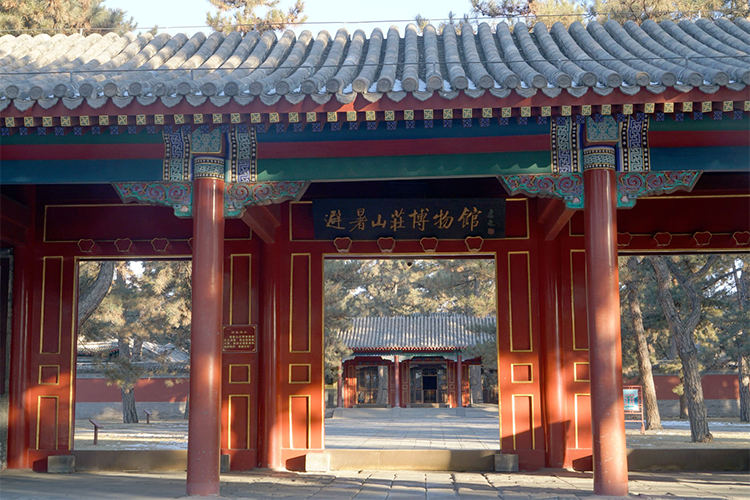Imperial Museum China: Chengde Mountain Resort — Guide to the Qing Royal Summer Palace
Introduction
Push open the vermilion palace gates and you are met by the warm scent of golden nanmu and the hushed breath of history. The Chengde Mountain Resort Museum is not just a repository of artifacts—it is a living Qing‑dynasty court theatre. Every grain in the golden nanmu halls reflects Emperor Qianlong’s aesthetic will; the gilded bronze Buddhist shrines still hint at the fusion of Tibetan and Han traditions; and the set of gold bianzhong bells seems to wait for a time‑crossing court music performance. As China’s only top museum built within a complete imperial summer palace complex, it invites you to walk history not behind glass, but on the very jade‑polished bricks trod by emperors.
1. Royal architecture as the greatest artifact: a three‑dimensional history book
The museum itself is the crown jewel. Construction began in 1703 and, across the reigns of Emperors Kangxi and Qianlong, the core complex was completed after 89 years. The main palace area’s Danbo Jingcheng Hall is a wooden architecture marvel—built from rare golden nanmu without painted surfaces yet radiating a natural amber sheen. In summer a cool, resinous fragrance drifts through, embodying the hall’s “plainness and sincerity” governing philosophy.
The layout follows strict front‑court/back‑residence ritual rules: a solemn central axis for state affairs, the Songhezhai residential gardens for imperial life, and a scattering of Tibetan Buddhist temples. Begin your visit at the main palace gate to immediately sense how space was used by the Qing rulers to weave political authority, domestic aesthetics, and religious policy into a single narrative.
2. Palace secrets: three must‑see signature artifacts
▎Gold bianzhong (National First‑Class Artifact)
This set of 16 pure‑gold bells was cast for Emperor Qianlong’s 75th birthday and weighs over 460 kg. Inscribed in both Manchu and Chinese, the bells still produce a clear, bright tone when gently struck. Beyond their musical function, they are a powerful visual statement of the Qing emperor’s role as multiethnic sovereign.
▎Gilded bronze Tsongkhapa shrine
A tribute from Tibet, this gilded bronze shrine is inlaid with turquoise and represents the peak of Tibetan Buddhist metalwork. A Manchu inscription on the rear reveals how Qianlong turned ritual gifts into diplomatic bonds.
▎Rosewood cloisonné throne screen
This three‑meter‑wide screen combines cloisonné enamel, jade inlay and other crafts. The front displays imperial dragon motifs; the back shows Jiangnan‑style birds and flowers—evidence that even emperors nurtured refined, literati tastes in private.
Curatorial approach: Artifacts are not isolated but displayed in context. You will see enamel inkstones next to the warm chambers where the emperor read memorials, and scriptures paired with ritual implements in the temple halls. This immersive presentation lets objects regain their original life.

3. Deep‑dive visitor guide: live a Qing court day
Recommended routes
– Quick highlights (1.5 hours): Main Gate → Danbo Jingcheng Hall (gold bianzhong) → Sizhi Study (state business scenes) → Yanbo Zhisuan Hall (imperial living rooms preserved)
– Cultural immersion (4 hours): Add Songhezhai residential area + Zhuyuan Temple religious exhibits + seasonal special exhibitions (summer Tibetan thangka displays are often on view)
Hidden photo spots
– The west wing’s “ice‑crack” lattice window in Songhezhai casts a striking chessboard light pattern on the floor in the afternoon.
– The gilded bronze deer sculpture in the rear garden references Qianlong’s hunting culture and makes an ideal early‑morning photo subject when light is soft.
4. Practical tips: avoid mistakes most tourists make
Time magic
– Best times: enter at 8:30 on opening (avoid tour groups arriving after 10:00) or after 15:00 for the most beautiful light.
– Note: mountain resort altitudes are 3–5°C cooler than downtown Chengde—bring a light jacket in summer.
Ticketing wisdom
– Foreign visitors can buy tickets on site with passport (¥130, includes resort admission).
– Pro tip: reserve online one day in advance for the dedicated entry lane (English site may require a browser translator).
Transport hacks
– From Chengde Railway Station take the “Resort Express” tourist shuttle (English signage) directly to the main gate.
– Self‑drivers can park at Chenghuang Temple Parking Lot (10‑minute walk) to avoid expensive onsite parking fees.
Pro tips
– Closed every Monday (except public holidays).
– Download the DailyArt app to scan exhibit labels for in‑depth English audio (covers ~70% of major pieces).
– The East Palace ruins are under archaeological excavation and may be open for temporary visits—ask staff in blue vests for access.

5. Cultural takeaways: bring royal aesthetics home
The museum shop offers exclusive designs like thin‑golded Shoujin‑style notebooks and cloisonné patterned silk scarves.
Walk 15 minutes to Chengde Old Street’s Rehe Craft Workshop for living‑heritage experiences:
– Manchu embroidery class (2 hours, instructors speak basic English)
– Custom Manchu‑name seal carving (requires one‑day advance booking)
Conclusion
When sunset bathes the golden nanmu in a final honeyed glow, you’ll understand why this is called a “living museum.” Cicadas replace court proclamations, pine winds mimic old music, and the quiet artifacts continue an endless imperial narrative. Pick a clear morning and keep your private appointment with the Kangxi‑Qianlong era.
Visitor confirmation and updates based on field research through 2023—please call +86 314 202 9779 to confirm current arrangements before you go.


